
The Collegiata di Santa Maria Maddalena, the church in the small Italian seaside resort of Atrani is probably one of the most iconic churches to feature in the work of M.C. Escher. This lithograph itself may not be as well known, but the building with the distinctive bell tower has gained world-wide fame because of the three Metamorphoses. In the first, small version of this woodcut, made in 1937, the church is at the beginning of a metamorphosis, a change of physical form.
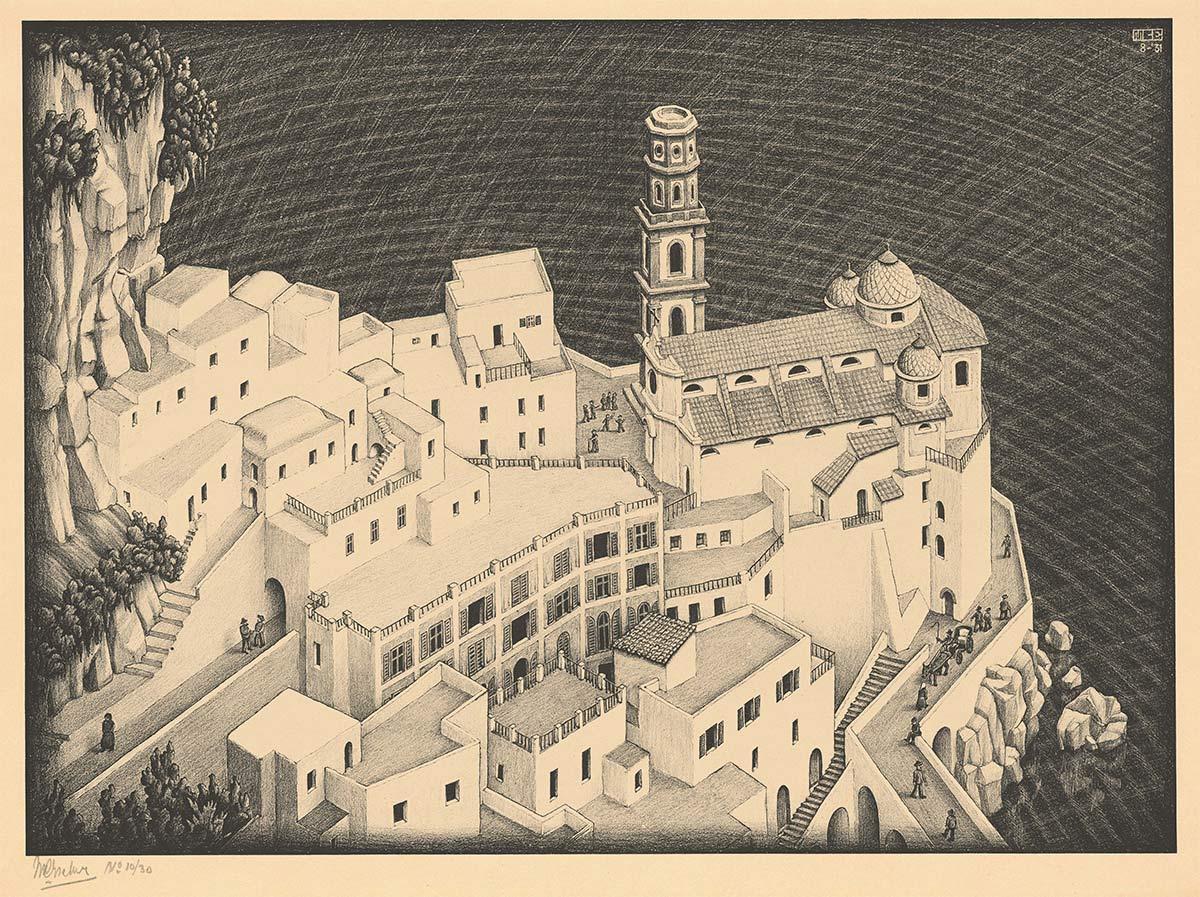
In the second and third Metamorphosis, created in 1939/40 and 67/68 respectively, the little town has almost completed the 'cycle of change'. (Image is a bit further on in this article). To simplify the transition to the chess pieces and the chess board, Escher ingeniously incorporated a bridge that links up the two elements. In reality, this bridge never existed.

It is a remarkable visual association that seamlessly connects the beginning and the end of the two long woodcuts. We have literally come full circle. In the museum, the third and final Metamorphosis, the 7 meter long Metamorphosis III, has been mounted in a special round frame that measures more than two-and-a-half meters across.
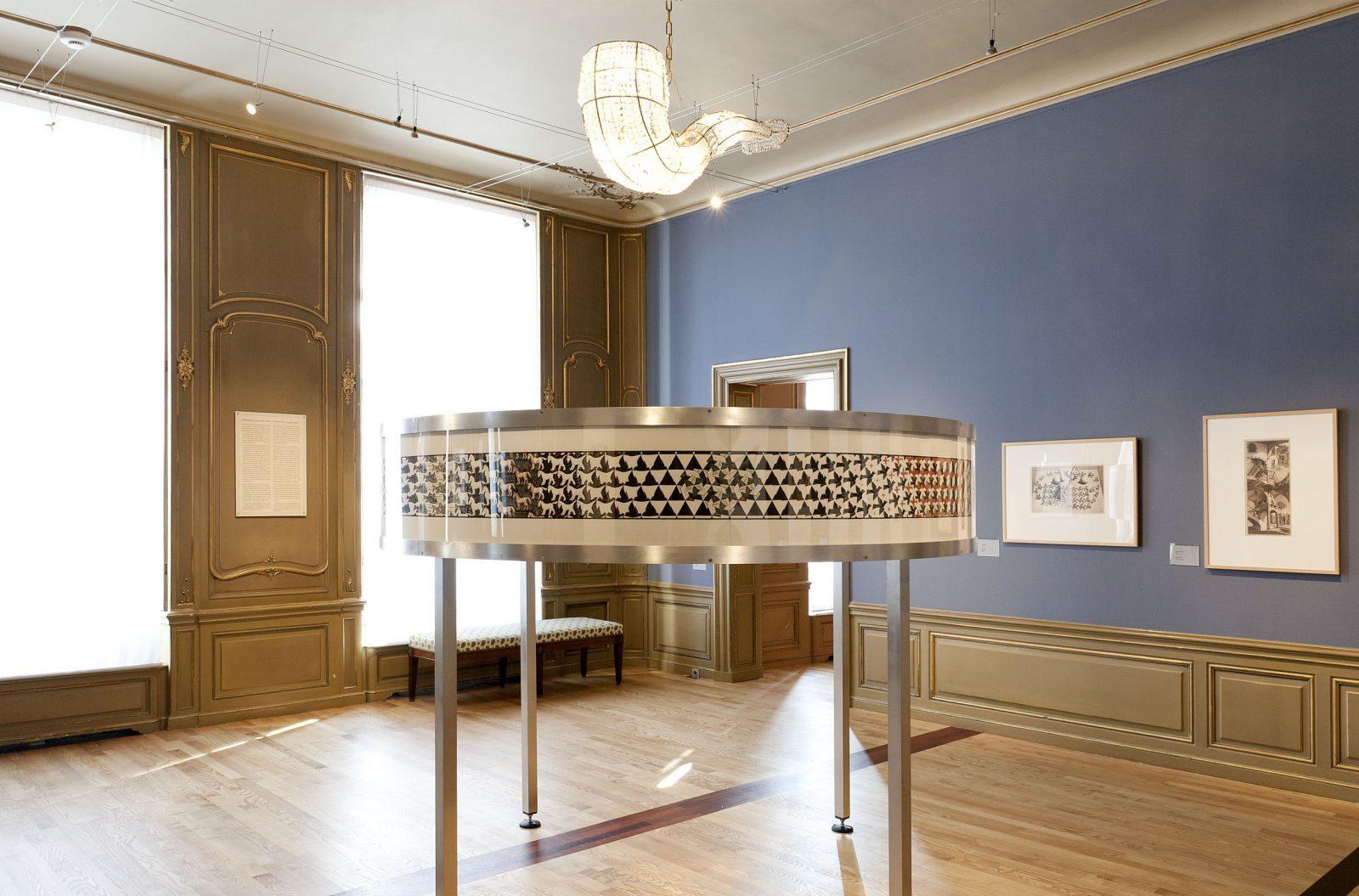
In the evolution of Escher's work, we can clearly see how he thought up and worked out his themes. This lithograph and the series of Metamorphoses are not the only works in which this church, the Collegiata di Santa Maria Maddalena, makes an appearance. In 1931, the year of his visit to Atrani, Escher produced a beautiful crayon drawing. On this drawing, shown below, the staircase that Escher climbed on 25th May features prominently. The nave of the Collegiata di Santa Maria Maddalena is noticeably shortened, and is omitted altogether in the lithograph and in the Metamorphosis series.
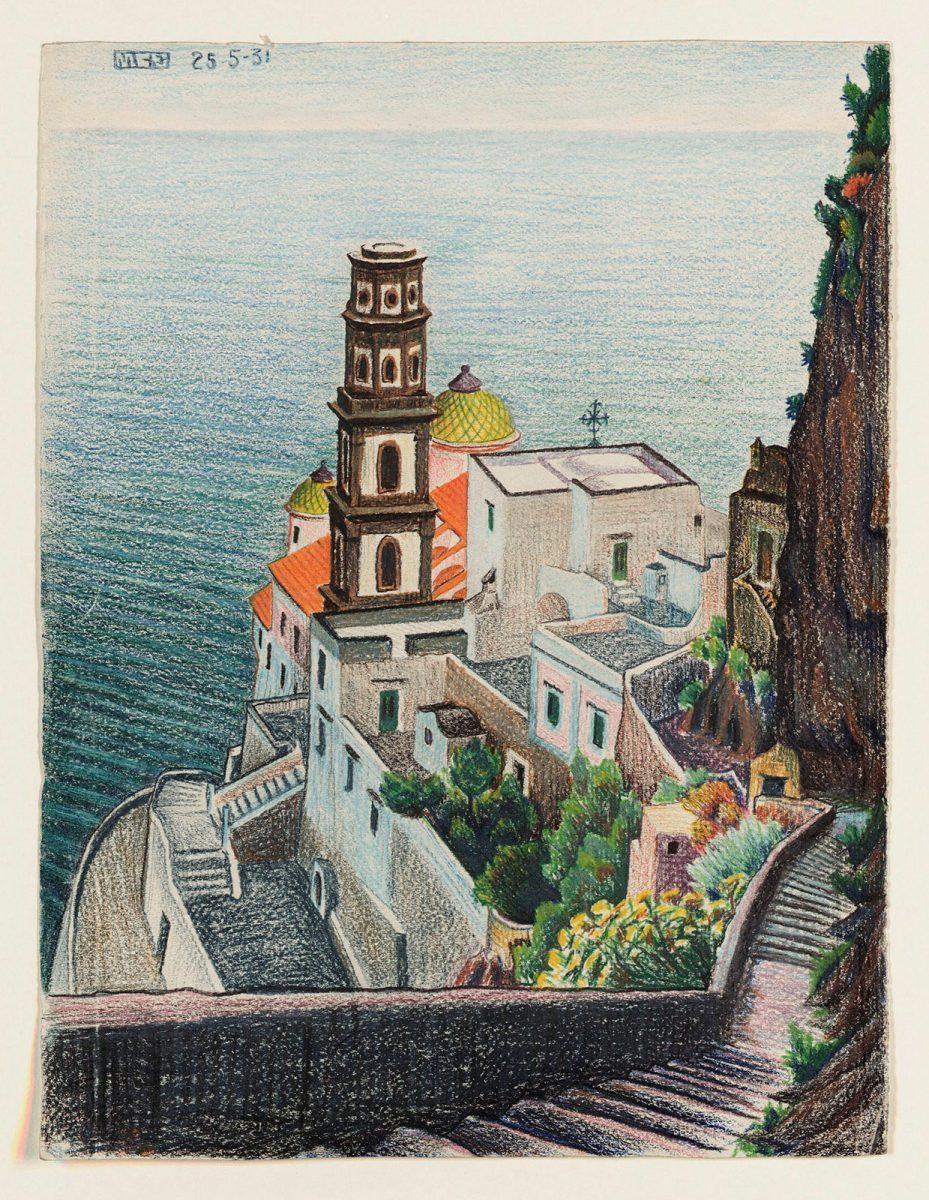
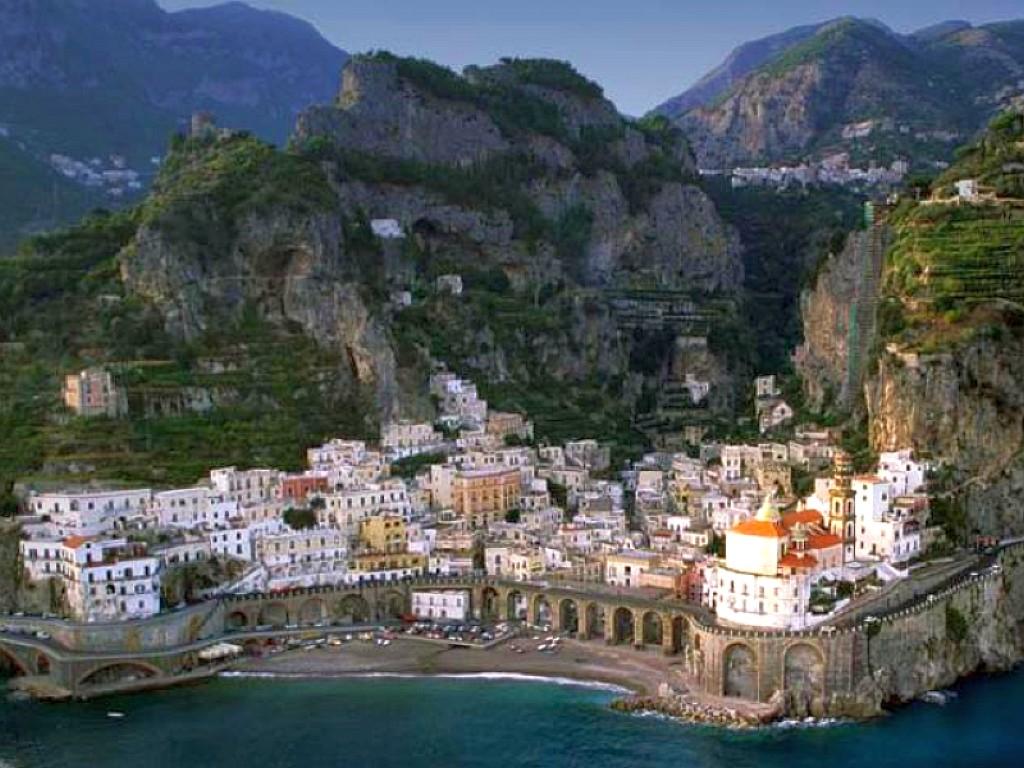
In 1931, Escher also made another lithograph, entitled Dilapidated Houses in Atrani. In this work, the bell tower and the church with its long nave and the round domes of the chapels tower above the little town. The lithograph bears a slight resemblance to the photo depicting Atrani as it looks today.
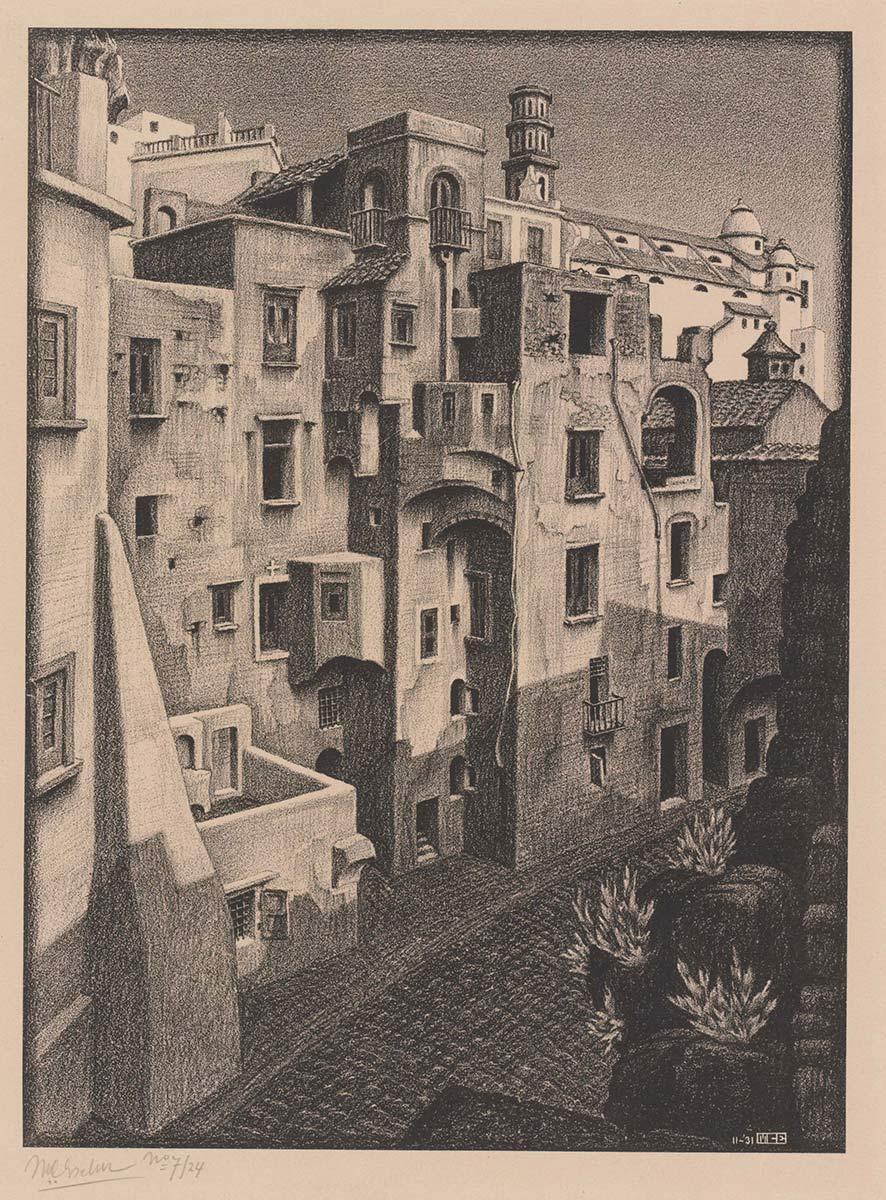
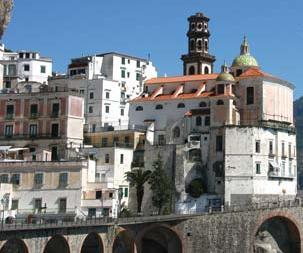
The houses have since been renovated. Atrani and the twin town of Amalfi are tourist attractions along the Amalfi coast, just south of Naples.
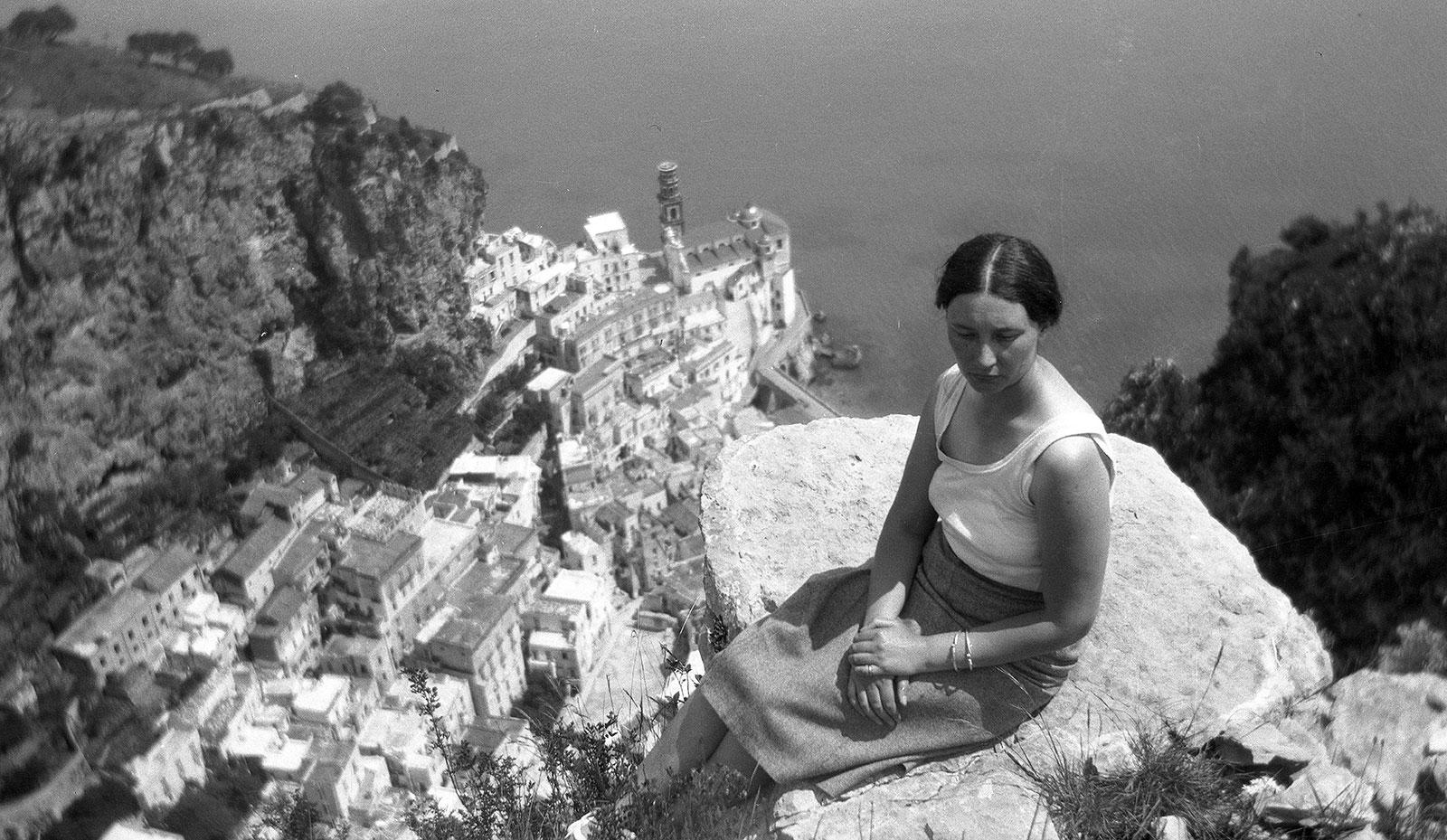
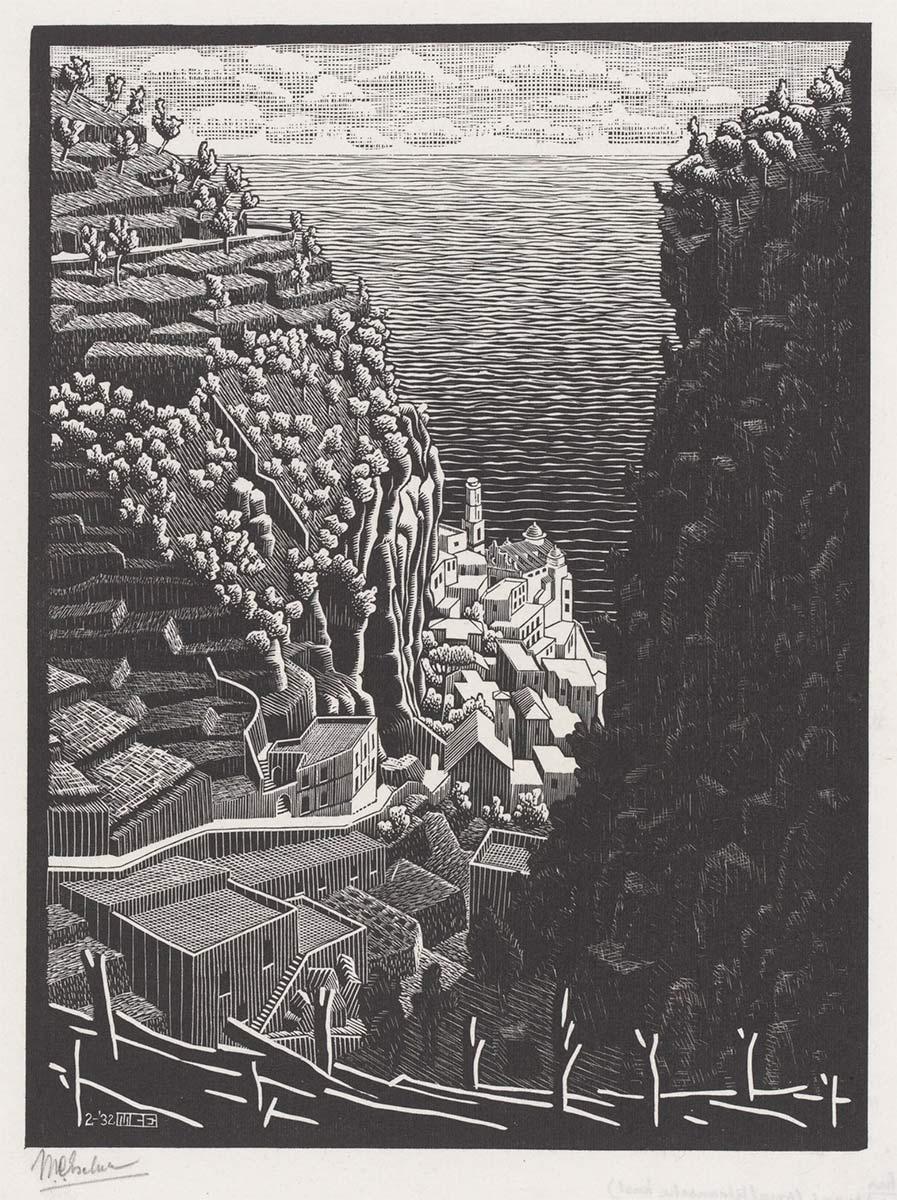
Six months later, in February 1932, Escher made another woodcut of Atrani. I have displayed the photo of Jetta of 1931 alongside this work, because it is conceivable that Escher made another drawing of Atrani on this same spot, which he later used to draw inspiration for the first lithograph and for the Metamorphosis series.
In this last print, the little town peeps out between the two sheer mountains. The endless sea and the slow transition to the cloud-filled sky make the little town seem even smaller.
The place where Jetta is seated is not the same vantage point that Escher used on 25 May to make the colour drawing of the bell tower (see above), which shows the building from a different angle. On the photo, the nave of the church can be seen between Jetta and the tower; the photo of Jetta, the 1931 lithograph and the 1932 woodcut made depict roughly the same scene. The first lithograph of 1931 and the photo of Jetta provide a clue as to how Escher came up with the idea of extending the bell tower for the Metamorphosis series. The street, which today passes beneath the church, was not as wide as it is now. On the drawing of 25 May 1931, the road is clearly not wide enough to accommodate two passing cars. Not surprisingly, perhaps, as this was the era of the 'Dilapidated houses'. If you look closely at the photo of Jetta, you can vaguely make out what appears to be a stone pontoon in the background. Might this once have been a landing stage for fishing vessels?
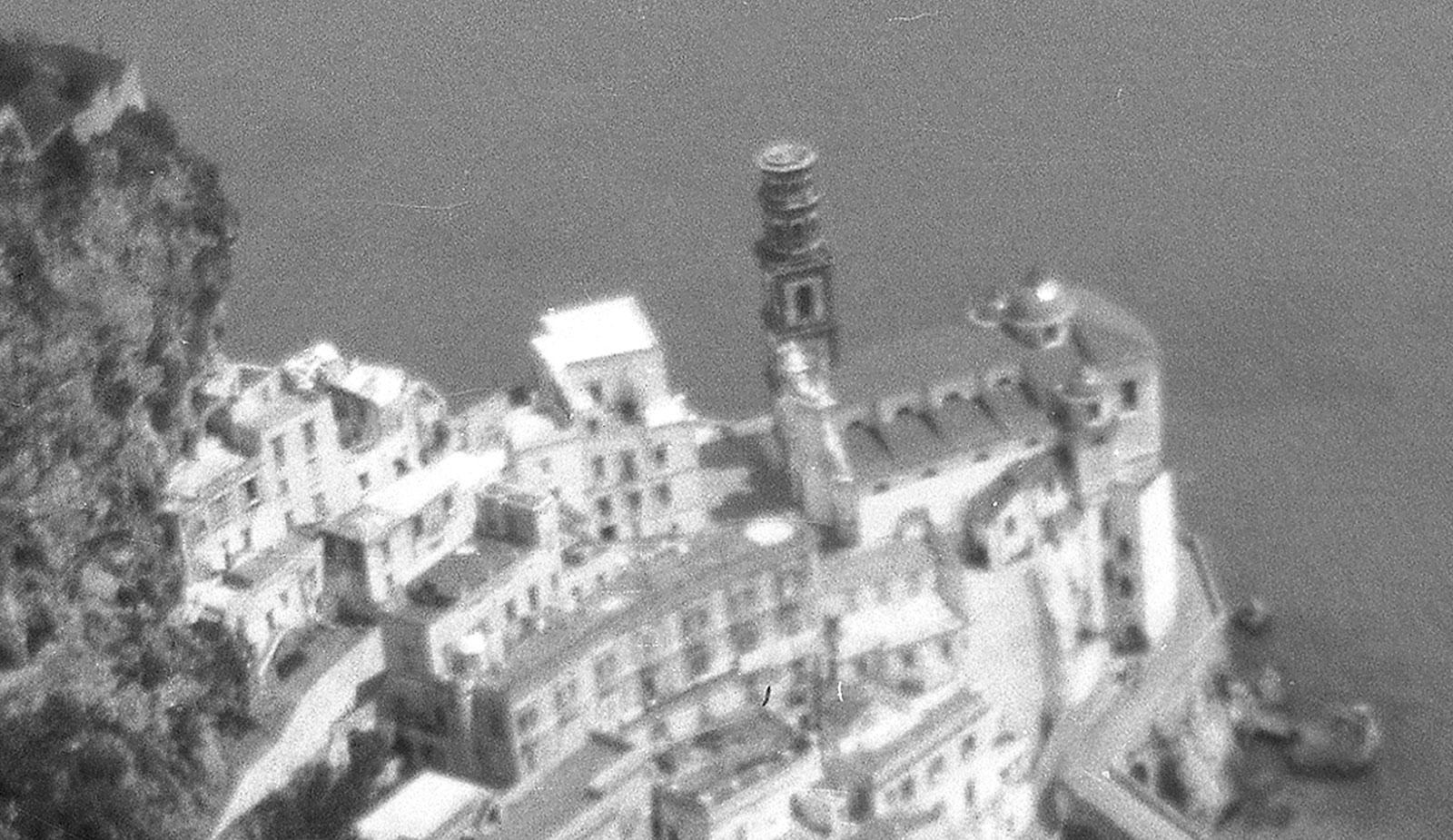

We have enlarged this section of the photo as much as possible and added some contrast. In the first lithograph, the 'landing stage' appears to be a collection of rocks in the sea; in Metamorphosis II and III, the tower has been added.
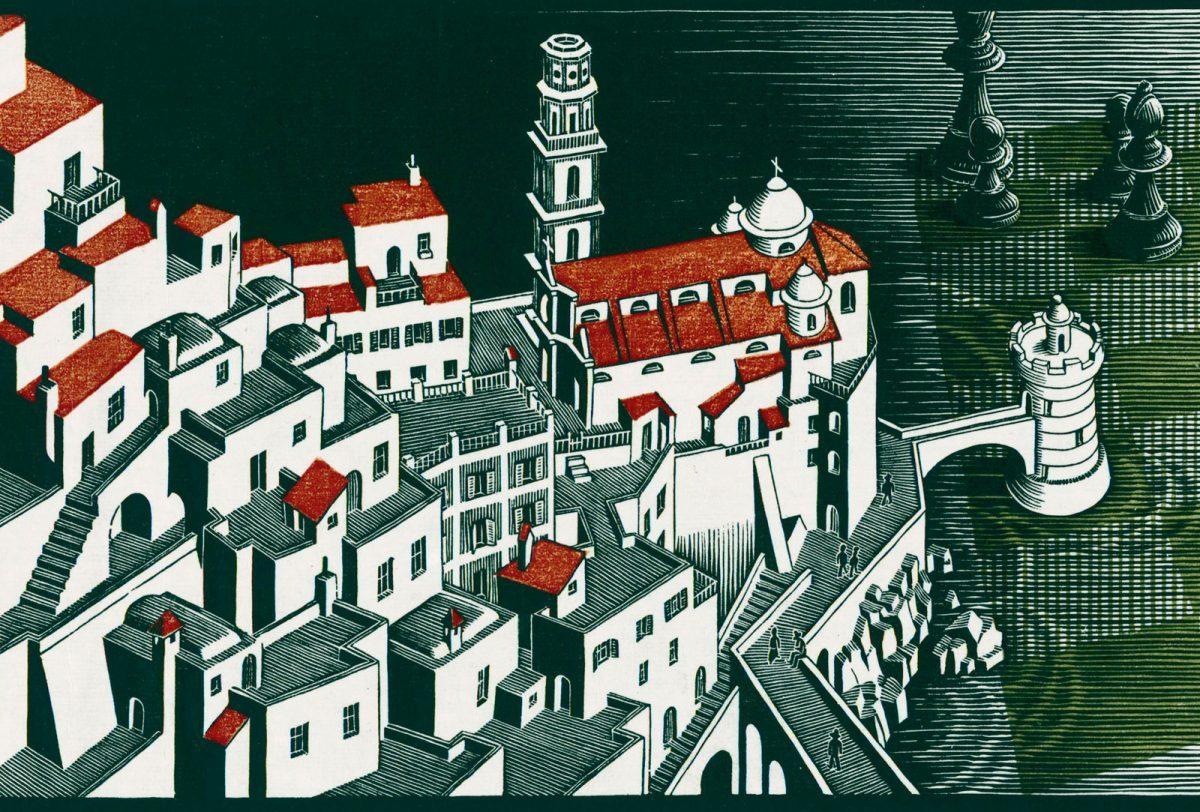
Escher described Metamorphosis II and III as follows:
“a playful, childlike toying with imagery and thought associations, which more or less randomly followed on from each other without any attempt at profundity.”
And that is how Escher's 'stream of visual consciousness' transforms a rock into a bridge with a small tower. This little building then gradually transforms into the rook piece on the chess board! The pattern of the chess board morphs into the word ‘metamorphosis’, and seamlessly links up with the beginning of the four- or seven-meter-long print. Beginning and end are the same, and can be explored for all eternity, especially in the round-framed Metamorphosis III.
Escher's visit to Atrani in May appears to have made a deep and lasting impression on him and on his work. In his inimitable style, he turned the Collegiata di Santa Maria Maddalena into one of the most iconic buildings of his entire oeuvre.
